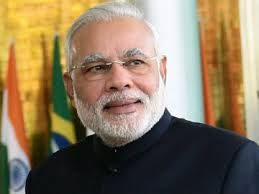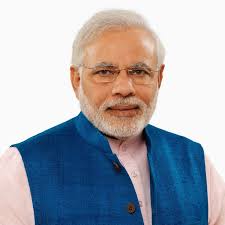
While India’s Narendra Modi government claims to have cleared new defense programs worth $30 billion aimed at boosting domestic industry, it could still take more than 10 years to reach the contract stage because of lengthy procurement cycles and slow decision-making.
Analysts and military officials welcome the “Make in India” concept but private defense companies are apprehensive it reflects only a paper policy and that there is no clear roadmap to boost indigenous weapons production and reduce dependence on imports.
The thrust of the “Make in India” policy is to reduce weapon imports from the current 70 percent of acquisition to about 50 percent in the next 10 years as India plans to spend $150 billion on equipment in the next 15 years.
“The implementation and a flat growth in [defense] acquisition funding continues to be an issue. The real challenge is whether the Make in India concept is just about adding to the state-owned enterprises’ assembly lines with private sector production facilities or is it about creating indigenous defense products in the country,” says Rahul Choudhary, CEO of private sector Tata Power SED.
It can take up to 10 years for a defense program to achieve final approval.
“Approvals are important as these pave the way for the tendering process to start but it is more important to ensure that the post-approval process does not get stymied at any of the subsequent stages in the procurement cycle, as has been happening so often,” said Amit Cowshish, the Defence Ministry’s former additional financial adviser.
“There is no dearth of cases in which the request for proposal gets retracted, and commencement of the contract negotiations is no guarantee that the contract is on the horizon,” Cowshish added.
The mother of all defense deals, the Medium Multirole Combat Aircraft program, which was abandoned after three years of negotiations, is a case in point, he said.
Some analysts say the “Make in India” policy is misleading because there is no distinct category in the Defence Procurement Procedures (DPP) called “Make in India.”
The Make in India category is meant for projects to be manufactured by only domestic companies from the design to the development and production stages. Under this category, the MoD provides about 80 percent of the funding to develop high-tech system prototypes. So far, no projects have been executed in this category.
Under the second category, Buy and Make (India), tenders are given only to domestic companies that can then tie up with overseas companies able to transfer technology.
Talking about the slow progress in the Make in India category, Cowshish said, “These are complex projects which require a great deal of planning. To add to the woes, the procedure is also complex and time consuming. But the problem so far has been with selection of the development agencies which, in turn, is attributable to tardy decision-making.”
Appreciating government efforts to promote the Make in India category, a senior MoD official said, “Defense Minister [Manohar] Parrikar has made certain forward-looking changes to the Make procedure, such as according priority to the micro, small and medium enterprises, providing for up to 90 percent funding, enlarging the scope of Make projects and making the entire process more operationally viable.”
A select panel set up by the MoD called the Aatre Committee recommended in January that private sector defense companies serving as strategic partners should be selected to build large systems on nomination basis — a process currently used only for state-owned enterprises.
The MoD has yet to accept the recommendations and announce a policy on selection of private companies as strategic partners.
Vivek Rae, MoD’s former chief of defense procurement, said, “National champions need to be identified, nurtured and built over decades through a flow of orders on cost-plus basis wherever price discovery is not possible through competitive bidding. This is likely for complex systems like submarines, warships and aircraft. India has followed this approach for defense public sector undertakings but not for private sector.”
The challenge, he said, is to develop strategic partners in the private sector.
“A national consensus should be created for this effort, cutting across party lines. Otherwise, allegations may fly thick and fast. Only companies with deep pockets and established credentials can qualify as strategic partners. Others will have to be satisfied as tier one or tier two vendors to strategic partners.”
Analysts and weapon users support self-reliance in weapons production but remain skeptical about whether India would become a leading weapon producer one day.
Giving reason for this skepticism, Rahul Bhonsle, retired Indian Army brigadier general, said, “There are two problems in this: trust in government policies and investment. The private sector lacks trust in the government policies and are thus unwilling to invest unless there is clarity in the same.
“The way ahead for the government is to provide the seed money to selected private sector manufacturers with proven capabilities rather than floating requests for information to multiple vendors in the hope that competition will bring better outcomes,” Bhonsle said.
A senior executive of a leading private sector defence company, however, said, “The policy to boost the domestic private sector should be fast converted to orders for the private sector. If that does not happen then the green shoots which are beginning to appear in the defence industry will disappear quite rapidly and we will be back to where we started.”
IndianBureaucracy.com acknowledges the fact that it is just a start and the initiative is a long haul. We should be giving the initiative some time to settle down.







Leave a Reply
You must be logged in to post a comment.